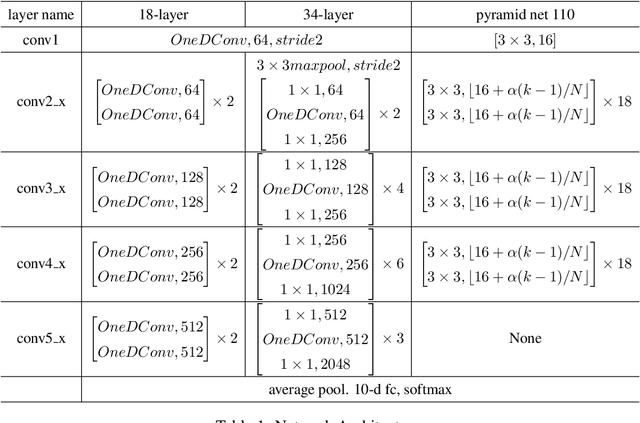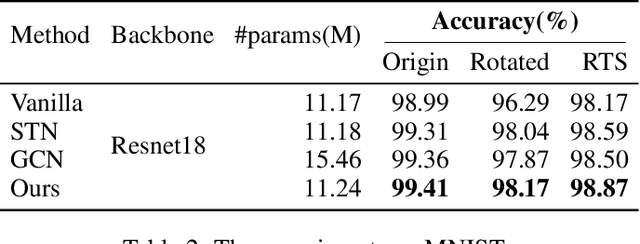Haohan Weng
refer to the report for detailed contributions
Nautilus: Locality-aware Autoencoder for Scalable Mesh Generation
Jan 27, 2025



Abstract:Triangle meshes are fundamental to 3D applications, enabling efficient modification and rasterization while maintaining compatibility with standard rendering pipelines. However, current automatic mesh generation methods typically rely on intermediate representations that lack the continuous surface quality inherent to meshes. Converting these representations into meshes produces dense, suboptimal outputs. Although recent autoregressive approaches demonstrate promise in directly modeling mesh vertices and faces, they are constrained by the limitation in face count, scalability, and structural fidelity. To address these challenges, we propose Nautilus, a locality-aware autoencoder for artist-like mesh generation that leverages the local properties of manifold meshes to achieve structural fidelity and efficient representation. Our approach introduces a novel tokenization algorithm that preserves face proximity relationships and compresses sequence length through locally shared vertices and edges, enabling the generation of meshes with an unprecedented scale of up to 5,000 faces. Furthermore, we develop a Dual-stream Point Conditioner that provides multi-scale geometric guidance, ensuring global consistency and local structural fidelity by capturing fine-grained geometric features. Extensive experiments demonstrate that Nautilus significantly outperforms state-of-the-art methods in both fidelity and scalability. The project page will be released to https://nautilusmeshgen.github.io.
Hunyuan3D 2.0: Scaling Diffusion Models for High Resolution Textured 3D Assets Generation
Jan 21, 2025



Abstract:We present Hunyuan3D 2.0, an advanced large-scale 3D synthesis system for generating high-resolution textured 3D assets. This system includes two foundation components: a large-scale shape generation model -- Hunyuan3D-DiT, and a large-scale texture synthesis model -- Hunyuan3D-Paint. The shape generative model, built on a scalable flow-based diffusion transformer, aims to create geometry that properly aligns with a given condition image, laying a solid foundation for downstream applications. The texture synthesis model, benefiting from strong geometric and diffusion priors, produces high-resolution and vibrant texture maps for either generated or hand-crafted meshes. Furthermore, we build Hunyuan3D-Studio -- a versatile, user-friendly production platform that simplifies the re-creation process of 3D assets. It allows both professional and amateur users to manipulate or even animate their meshes efficiently. We systematically evaluate our models, showing that Hunyuan3D 2.0 outperforms previous state-of-the-art models, including the open-source models and closed-source models in geometry details, condition alignment, texture quality, and etc. Hunyuan3D 2.0 is publicly released in order to fill the gaps in the open-source 3D community for large-scale foundation generative models. The code and pre-trained weights of our models are available at: https://github.com/Tencent/Hunyuan3D-2
Scaling Mesh Generation via Compressive Tokenization
Nov 11, 2024



Abstract:We propose a compressive yet effective mesh representation, Blocked and Patchified Tokenization (BPT), facilitating the generation of meshes exceeding 8k faces. BPT compresses mesh sequences by employing block-wise indexing and patch aggregation, reducing their length by approximately 75\% compared to the original sequences. This compression milestone unlocks the potential to utilize mesh data with significantly more faces, thereby enhancing detail richness and improving generation robustness. Empowered with the BPT, we have built a foundation mesh generative model training on scaled mesh data to support flexible control for point clouds and images. Our model demonstrates the capability to generate meshes with intricate details and accurate topology, achieving SoTA performance on mesh generation and reaching the level for direct product usage.
PivotMesh: Generic 3D Mesh Generation via Pivot Vertices Guidance
May 27, 2024



Abstract:Generating compact and sharply detailed 3D meshes poses a significant challenge for current 3D generative models. Different from extracting dense meshes from neural representation, some recent works try to model the native mesh distribution (i.e., a set of triangles), which generates more compact results as humans crafted. However, due to the complexity and variety of mesh topology, these methods are typically limited to small datasets with specific categories and are hard to extend. In this paper, we introduce a generic and scalable mesh generation framework PivotMesh, which makes an initial attempt to extend the native mesh generation to large-scale datasets. We employ a transformer-based auto-encoder to encode meshes into discrete tokens and decode them from face level to vertex level hierarchically. Subsequently, to model the complex typology, we first learn to generate pivot vertices as coarse mesh representation and then generate the complete mesh tokens with the same auto-regressive Transformer. This reduces the difficulty compared with directly modeling the mesh distribution and further improves the model controllability. PivotMesh demonstrates its versatility by effectively learning from both small datasets like Shapenet, and large-scale datasets like Objaverse and Objaverse-xl. Extensive experiments indicate that PivotMesh can generate compact and sharp 3D meshes across various categories, highlighting its great potential for native mesh modeling.
Desigen: A Pipeline for Controllable Design Template Generation
Mar 14, 2024Abstract:Templates serve as a good starting point to implement a design (e.g., banner, slide) but it takes great effort from designers to manually create. In this paper, we present Desigen, an automatic template creation pipeline which generates background images as well as harmonious layout elements over the background. Different from natural images, a background image should preserve enough non-salient space for the overlaying layout elements. To equip existing advanced diffusion-based models with stronger spatial control, we propose two simple but effective techniques to constrain the saliency distribution and reduce the attention weight in desired regions during the background generation process. Then conditioned on the background, we synthesize the layout with a Transformer-based autoregressive generator. To achieve a more harmonious composition, we propose an iterative inference strategy to adjust the synthesized background and layout in multiple rounds. We constructed a design dataset with more than 40k advertisement banners to verify our approach. Extensive experiments demonstrate that the proposed pipeline generates high-quality templates comparable to human designers. More than a single-page design, we further show an application of presentation generation that outputs a set of theme-consistent slides. The data and code are available at https://whaohan.github.io/desigen.
Consistent123: Improve Consistency for One Image to 3D Object Synthesis
Oct 12, 2023Abstract:Large image diffusion models enable novel view synthesis with high quality and excellent zero-shot capability. However, such models based on image-to-image translation have no guarantee of view consistency, limiting the performance for downstream tasks like 3D reconstruction and image-to-3D generation. To empower consistency, we propose Consistent123 to synthesize novel views simultaneously by incorporating additional cross-view attention layers and the shared self-attention mechanism. The proposed attention mechanism improves the interaction across all synthesized views, as well as the alignment between the condition view and novel views. In the sampling stage, such architecture supports simultaneously generating an arbitrary number of views while training at a fixed length. We also introduce a progressive classifier-free guidance strategy to achieve the trade-off between texture and geometry for synthesized object views. Qualitative and quantitative experiments show that Consistent123 outperforms baselines in view consistency by a large margin. Furthermore, we demonstrate a significant improvement of Consistent123 on varying downstream tasks, showing its great potential in the 3D generation field. The project page is available at consistent-123.github.io.
OneDConv: Generalized Convolution For Transform-Invariant Representation
Jan 15, 2022



Abstract:Convolutional Neural Networks (CNNs) have exhibited their great power in a variety of vision tasks. However, the lack of transform-invariant property limits their further applications in complicated real-world scenarios. In this work, we proposed a novel generalized one dimension convolutional operator (OneDConv), which dynamically transforms the convolution kernels based on the input features in a computationally and parametrically efficient manner. The proposed operator can extract the transform-invariant features naturally. It improves the robustness and generalization of convolution without sacrificing the performance on common images. The proposed OneDConv operator can substitute the vanilla convolution, thus it can be incorporated into current popular convolutional architectures and trained end-to-end readily. On several popular benchmarks, OneDConv outperforms the original convolution operation and other proposed models both in canonical and distorted images.
 Add to Chrome
Add to Chrome Add to Firefox
Add to Firefox Add to Edge
Add to Edge